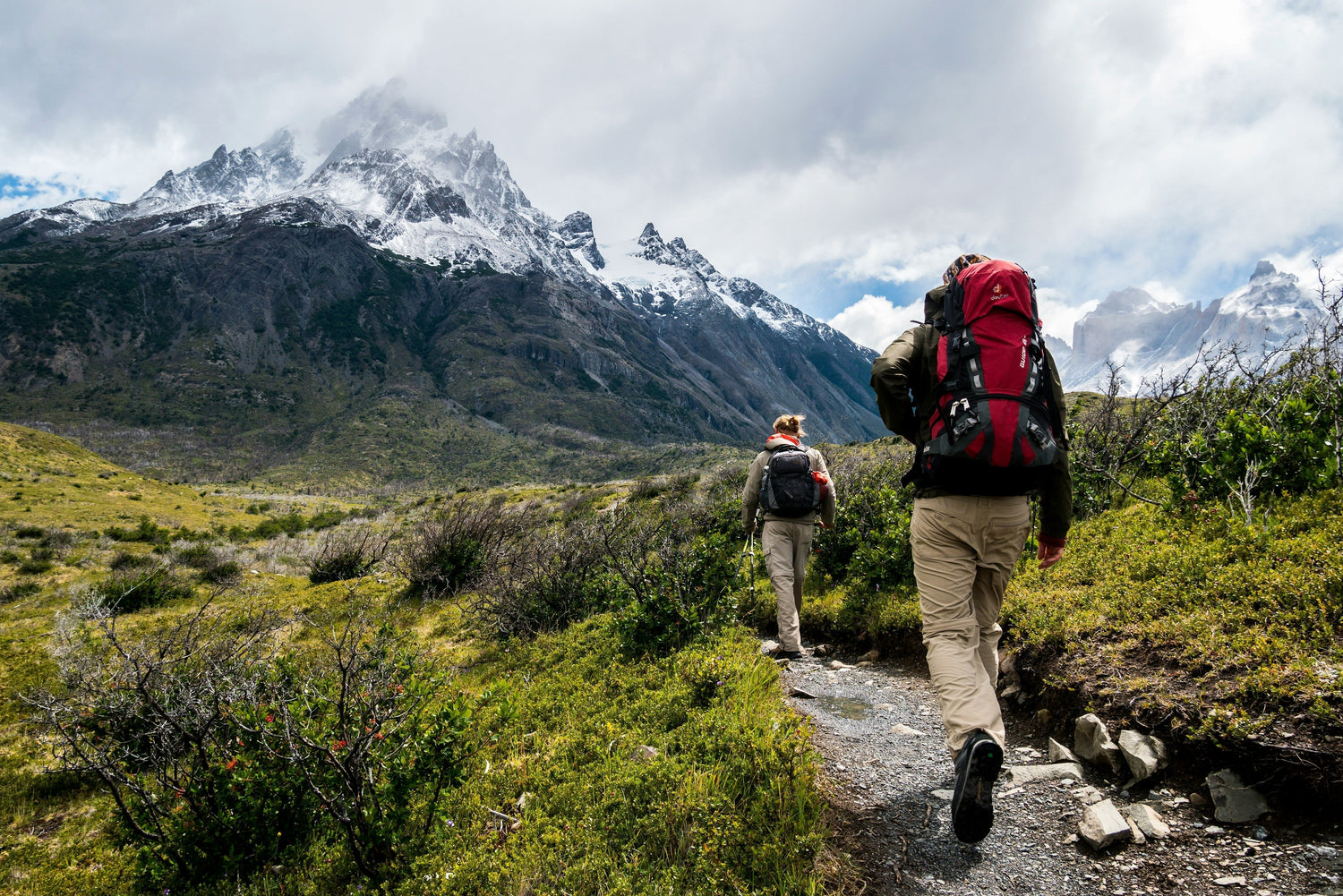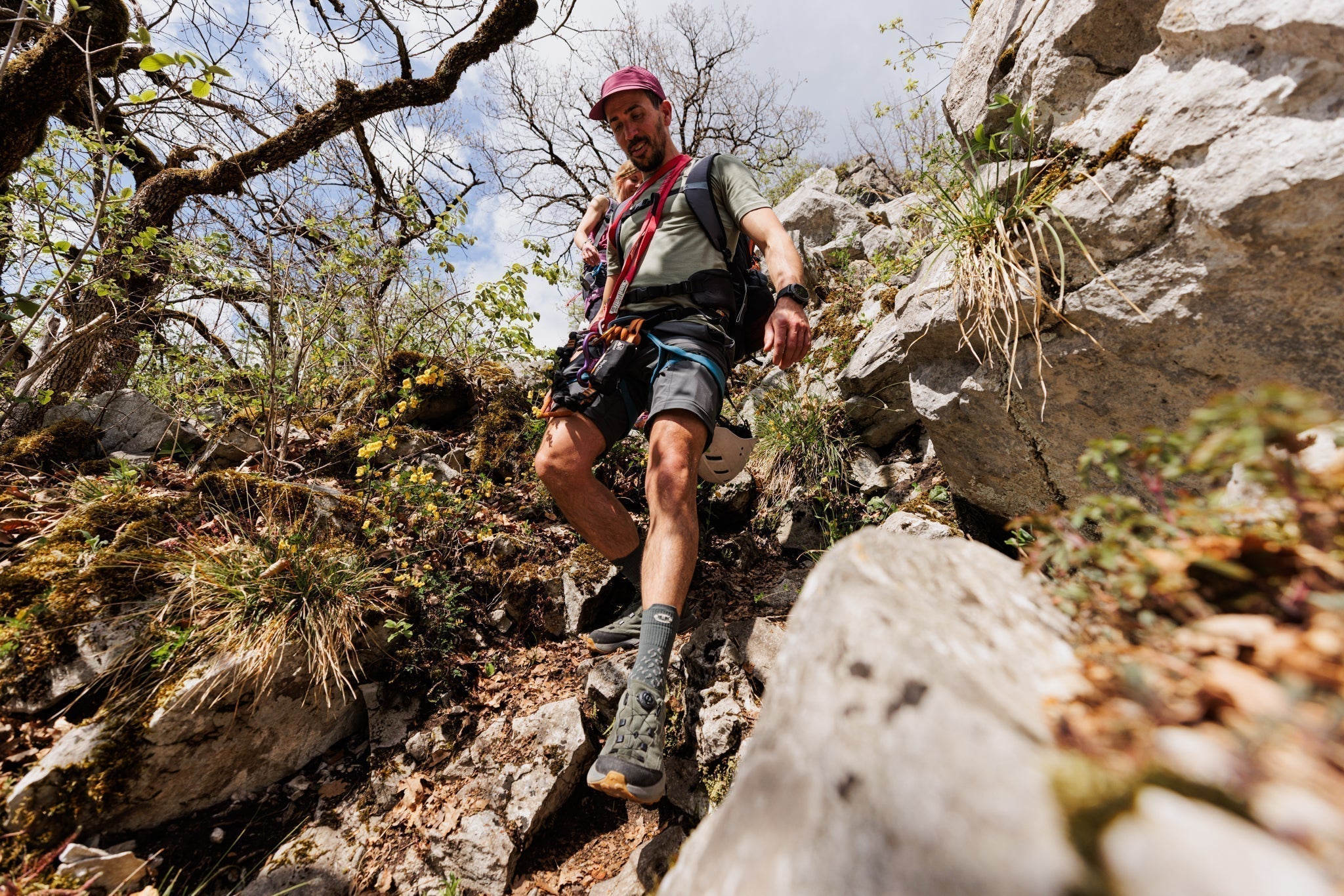Tired too quickly while hiking? Out of breath on the first climb?
What if the solution lies not in your physical form, but in the way you breathe?
Little known to the general public, Afghan walking is a technique that allows you to optimize your breathing and better manage effort over long distances. Used by Afghan nomads to cover miles without excessive fatigue, it is based on a simple principle: synchronizing breathing with steps to maintain a fluid and natural rhythm.
Result: better oxygenation, less muscle tension and improved endurance.
In this article, we'll explain how Afghan walking works, why it can truly transform your hiking experience, and, most importantly, how to do it easily and without any hassle.
What is Afghan walking?
Afghan walking is a breathing technique synchronized with steps , used by Afghan nomads to cover long distances without excessive fatigue. Its principle is based on a precise alternation between inspiration, air retention and expiration , allowing the optimization of oxygen intake and better management of effort.
In practice, it follows a specific rhythm: inhale for three steps, hold the air for one, exhale for three more steps, then repeat. This cadence is adjusted depending on the terrain. When climbing, the sequence can be reduced to two steps to maintain a steady breathing pattern.
The benefits of this method are that it improves endurance, limits breathlessness, and reduces muscle fatigue. It is suitable for both casual hikers and experienced hikers looking for a more fluid and controlled approach to walking on varied terrain.
The keys to Afghan walking: synchronizing breath and step
Afghan walking is based on rhythmic breathing that accompanies each step.
Unlike traditional breathing, which is often irregular and dictated by effort, this method imposes a stable rhythm, which reduces cardio-respiratory stress and allows you to walk longer without feeling excessively tired.
The basic rhythm: breathing in 3-1 / 3-1
The most common technique follows this pattern:
➜ Inhale for 3 steps
➜ Air retention on 1 step
➜ Exhale on 3 steps
➜ Air retention on 1 step
This cycle helps balance oxygen supply and pulmonary ventilation, while creating a natural breath regulation effect.
Holding air between inhalation and exhalation promotes more efficient gas exchange in the lungs, which optimizes the delivery of oxygen to the muscles.
Adapt the pace to the terrain
The basic pace is effective on flat terrain, but must be adjusted according to the effort required:
➜ When climbing: the intensity increases, so you need to reduce the number of steps per cycle to better manage the effort. A 2-1 / 2-1 cadence is often more appropriate. Inhale for 2 steps, hold for 1, exhale for 2, hold for 1. This allows you to keep your breath steady without straining your lungs.
➜ On the descent: the effort is less, it is possible to lengthen the cycle to prolong oxygenation and relax the body. 4-2 / 4-2 breathing can be used to adopt a more relaxed rhythm.
➜ At a brisk pace (fast walking or uneven terrain): a 2-0 / 2-0 cadence (inhalation over 2 steps, exhalation over 2) increases the flow of oxygen without interruption.
Afghan Walking: Benefits for Your Body and Energy
Afghan walking is not just a simple breathing technique, and its effects do not stop at hiking: better oxygenation and smoother effort management also have daily benefits.
01. Less fatigue, more endurance
Breath-step synchronization optimizes the body's oxygenation. The result: your heart and muscles work more efficiently, and you can walk longer without feeling tired. Holding air between inhaling and exhaling prolongs oxygen absorption, thus delaying the buildup of lactic acid responsible for heavy legs.
02. Better breath management
When hiking, shortness of breath is often caused by irregular and overly shallow breathing. Afghan walking requires a constant pace that stabilizes oxygen intake and prevents choppy breathing. This allows you to maintain a smooth breathing pattern, even when climbing, without having to take frequent breaks.
03. Less impact on joints
A steady pace promotes a more controlled and less abrupt stride. Energy is better distributed throughout the body, reducing shock to the knees and ankles. In the long run, this reduces the risk of pain and injury related to unbalanced or jerky walking.
04. Faster recovery
By better managing your effort, you accumulate less muscle tension. Controlled breathing also promotes better elimination of carbon dioxide and toxins produced by your muscles. The result: less muscle soreness and more efficient recovery after a long hike.
05. A feeling of fluidity and well-being
Focusing your attention on your breathing creates an effect similar to moving meditation. Timing your breath to your steps calms the mind, reduces stress, and improves concentration. Many Afghan walking practitioners speak of a state of "flow," where the effort becomes almost imperceptible.
06. A method adaptable to all
Whether you're a beginner hiker or a long-distance hiker, Afghan walking adapts to your pace and skill level. Unlike complex techniques, it requires no special equipment, just a little practice to master it naturally.
Afghan Walking: 5 Tips for Easily Applying It on Your Hikes
In theory, Afghan walking is simple: you synchronize your breathing and steps to better manage your effort. In practice, incorporating it into your hiking routine requires a bit of adaptation. Here's how to do it effectively without it becoming a hassle.
01. Avoid constantly counting your steps
If you spend your time counting, walking becomes mechanical and you lose the pleasure of hiking.
The goal is not to be precise down to the last step, but to establish an overall rhythm. To do this:
➜ Start by applying the cycle for short portions, then return to natural breathing.
➜ Integrate the technique gradually, without trying to apply it continuously from the start.
02. Breathe through your nose as much as possible
Nasal breathing is more effective at filtering air, preventing dehydration, and improving oxygenation. It requires some practice at first, especially when climbing, but it helps regulate effort better over the long term.
Tip: If breathing through your nose becomes difficult, slow down slightly before adjusting the breathing cycle.
03. Find your own rhythm
The theoretical patterns (3-1 / 3-1, 2-1 / 2-1) are a basis, but each hiker has a different breathing pattern. If you feel that the pace is making you out of breath or tense, adapt it:
➜ Some people prefer a longer inhalation and a shorter exhalation.
➜ Others find more comfort by removing air retention.
The important thing is to stay fluid and comfortable.
04. Use the right moments to apply it
It is not necessary to march in step all the time. Afghan marching is particularly useful:
➜ Uphill, to avoid getting exhausted too quickly.
➜ During long monotonous sections, to stabilize energy.
➜ When fatigue sets in, to regain more controlled breathing.
When going downhill or on easy terrain, it is often more natural to breathe freely.
05. Practice before a big hike
It's best to test the method on short outings before incorporating it into a more demanding trek. A few minutes a day walking in the city or on a local trail is enough to get used to the principle.
Adopting Afghan walking is a gradual process, without pressure. Once well-integrated, it becomes second nature and significantly improves comfort over long distances.

Afghan March: See the effects on your next outing
Afghan walking isn't a miracle method, but it offers real comfort over long distances. By synchronizing breathing and strides, it helps you better manage your effort, limit breathlessness, and conserve energy.
The important thing isn't to stick to a rigid cadence, but to experiment and adapt the pace to your own breathing and terrain. With a little practice, this method becomes second nature and transforms your hiking style. Less effort, more fluidity, and, above all, true comfort over long distances.
Next time you go hiking, try it on a portion of the trail. You'll quickly see the difference.
Discover our other tips to get even more out of your hikes:
➜ 5 reasons to take your children hiking from a young age
➜ How to maintain your hiking shoes?
➜ How to avoid blisters when hiking?








